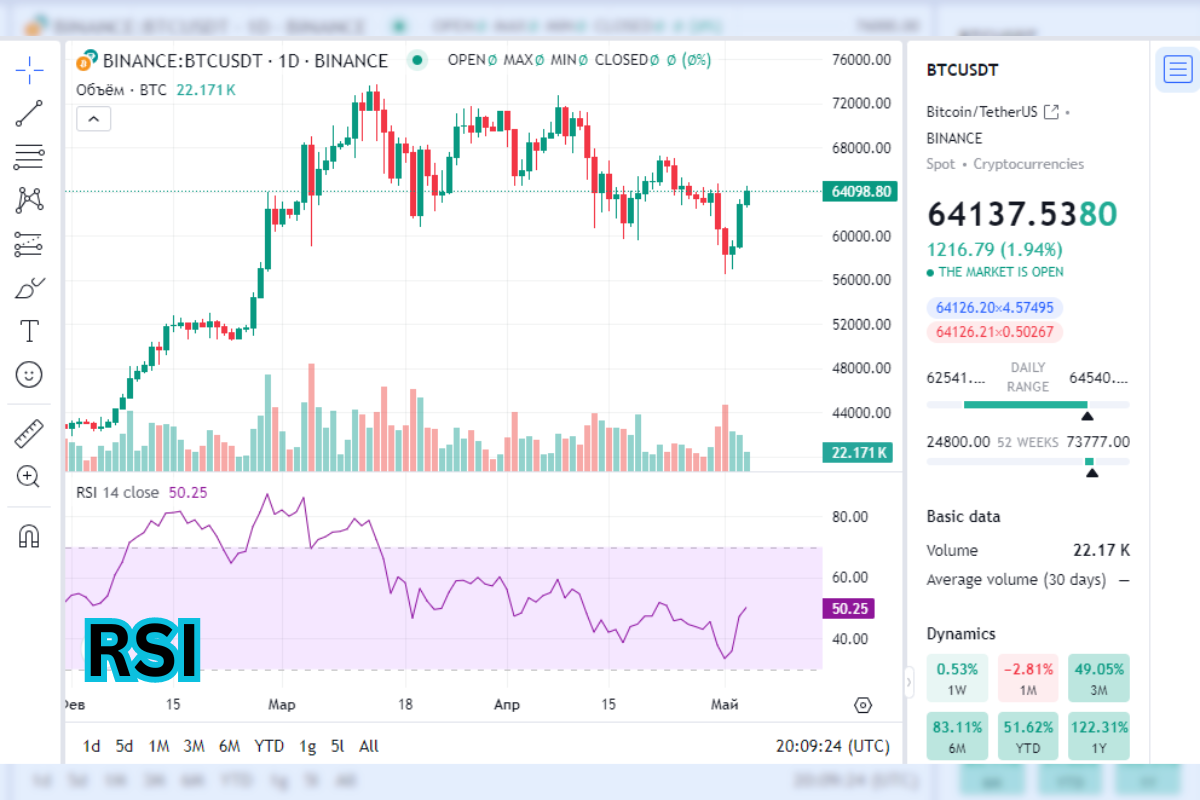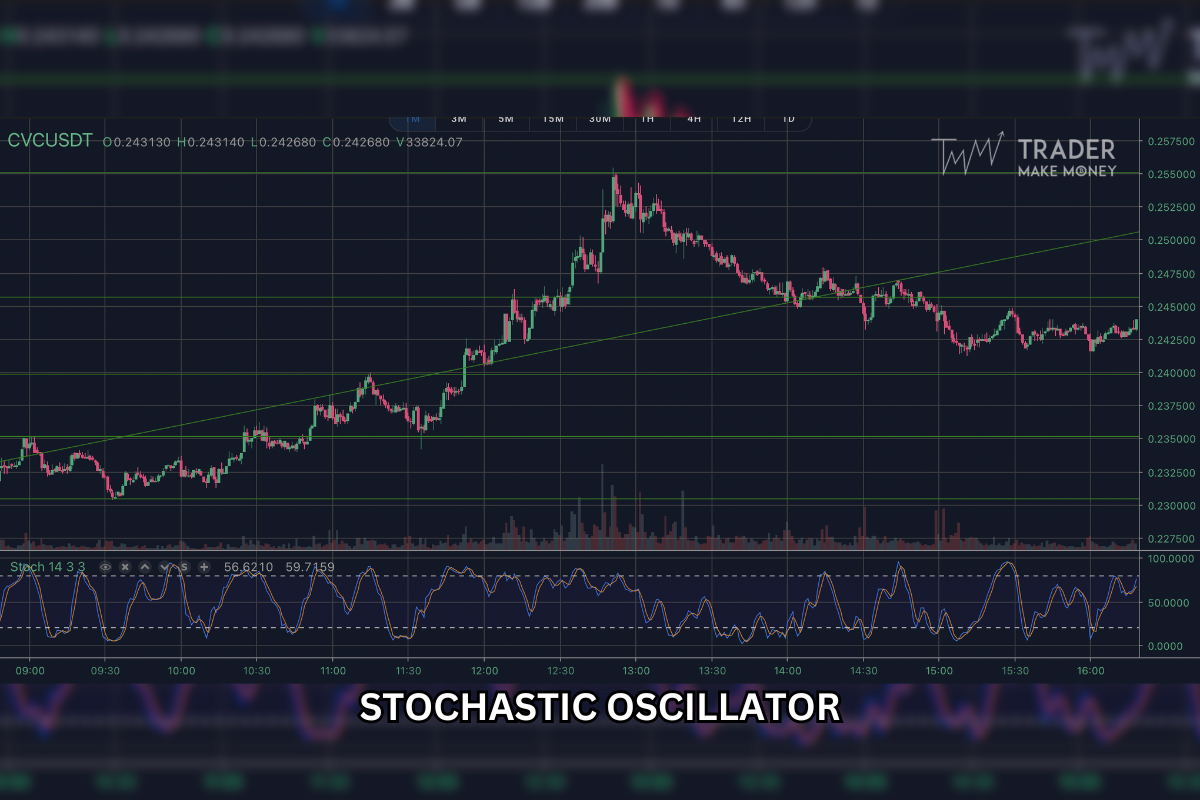It is no wonder that the financial world can sometimes prove difficult to maneuver. There are various instruments that traders use in order to gather information and thus make up their minds. Technical analysis (TA) is the most utilized method in the field since it employs historical price data and technical indicator to determine the future direction.
This guide compares two popular technical indicators (TIs) within the realm of TA: the RSI and the Stochastic Oscillator.
RSI and Stochastic Comparison
RSI (Relative Strength Index): Good thing for measuring a rise in cyclical momentum and for identifying stocks that have already run too far ahead or simply dropped in prices.
Stochastic Oscillator: Its quick reaction to short-term fluctuations in prices makes it well suited to emphasizing potential trend reversal spotting.
Which one to choose? You will have to decide on the destination for yourself.
The RSI is good for a person who uses a method that does not move up and down very fast. With this method, you can trade for long periods of time.
The Stochastic Oscillator provides you with a tool to capture fast movements, which could interest only short-term traders.
It is a matter of fact that the most appropriate tool will be determined by your trading style. Blend both RSI vs stochastic oscillator and then see which one helps you better!
Calculating the RSI indicator

- The first step of all this is finding out the RSI, which is the average of the price that went up in the past (Average Gain), and the average of the price gain that just went down (Average Loss) in a specific period.
- Then, it realizes the Relative Strength (RS) through the average gain being divided by the average loss. In case the Average Loss is viscosity the RS is said to be zero.
- Finally, the RSI is calculated using the following formula
RSI = 100 – (100 / (1 + RS))
Here’s a simple to understand its work:
- Imagine a seesaw. In the past, it was the typical point that 70 is the point where the RSI is high and it’s like the seesaw is tilted towards recent gains. This may indicate the commodity is overbought and, therefore, may be due for a correction in price.
- On the contrary, in highly negative situations, the flat side of the seesaw demonstrates recent losses and the remaining high side symbolizes previous gains. This implies that the asset under consideration may be overbought and may have some bullish impulse in the offing.
Here are a few important things to keep in mind:
- RSI figures are just reference figures that should be supplemented with a broader market analysis and consideration of the overall trend.
- Overbought and oversold levels within reversal indicators such as RSI can be false in the case where the market has a trend less defined or is in a lateral movement.
- Using these 70 and 30 thresholds as a basic starting point, RSI can often be tailored to fit the specific fluctuations in the asset market.
Another Tool in the Box: The Stochastic Oscillator
Side by side of the RSI above the stochastic indicator, an invention of George Lane in the 1950s, is another famous price momentum indicator. At the same time, contrary to the RSI values which depend on price fluctuations, the calculations of the Stochastic Oscillator are performed similarly to the closing price amount in relation to the recent trading range region.

Think of it like this: A river looks like the two banks on opposite sides, while the stunning natural attractions grace the shores. The stochastic oscillator is a realization that the trader is aware of how much the current quotation differs from the banks i.e. highs and lows lately.
Calculating the Stochastic Oscillator
The formula might seem complex, but the basic idea is simple:
- We compare the closing price to the recent high and low prices.
- We express this comparison as a percentage.
Here’s a simplified breakdown of the formula:
- %K: This is the main line of the indicator.
- Close: The current closing price of the security.
- Low: The lowest price within a chosen period (e.g., 14 days).
- High: The highest price within the chosen period (e.g., 14 days).
The formula itself is:
%K = (Close – Low) / (High – Low) * 100
Adding Smoothness with %D
Traders usually apply a different line to the one called %D besides %K on top of them. This line is an easy SMA of %K (typically at periods of 3 days). It acts like a balancer, it calms irregular %K movements and produces a clearly-detached signal.
Interpreting Stochastic Oscillator Readings
The Stochastic oscillator is somewhat similar to the RSI/Relative Strength Index, and it also moves between the range of 0 to 100. In a large part of cases, the score over 80 indicates the asset is overbought, whereas the data under 20 demonstrates the asset can be considered oversold. However, by definition, RSI has limitations (trend and market volatility are of great importance in this case).
Benefits of Using a Stochastic Oscillator
- The stochastic Oscillator moves close to prices, objectives that provide traders with simple selling and buying opportunities.
- Taking the oscillator chart with the price chart comparison, traders look for potential breakdowns and onsets of the trend.
In the case of an increasing price trend but divergent Stochastic Oscillator that makes lower highs (lower high), it is possible to speak of uptrend exhaustion that might be followed by a price decrease.
Limitations of Using a Stochastic Oscillator
High Sensitivity: However, the Stochastic Oscillator’s high readability to the price movements can also be its strong point as well as its weak point. This kind of tool may generate a lot of signals, particularly in market momentum stores and waves, while the portfolio manager is exposed to whipsaws he goes in and out of those positions for some time due to false signals.
RSI vs. Stochastic Oscillator; It will demonstrate the Final World War between man and machine.
Next, we’ll ensure that we have Mastered these two Indicators, and we need to see their performance against each other.
A striking commonality between RSI and Stochastic oscillators is their unique feature.
Both RSI and Stochastic Oscillators share some key similarities:
- Momentum Oscillators
They are categorized as moving averages indicators, for they are employed to examine the speed and intensity of price movements to detect possible overbought and oversold situations and to forecast future price direction.
- Overbought/Oversold Signals
Both create indications that can help in recognizing when an asset is overbought (entailing a likely price evaluation) or oversold (meaning that it is possible to get a rebound).
- Visual Representation
They are both shown as line oscillators that are located inside a specific scope (that may represent the range of 0 – 100).
Key Differences Between RSI and Stochastic Oscillator
Despite their similarities, there are some key distinctions between RSI and Stochastic Oscillators:
RSI
- Focus: Recent average of wins and losses
- Time Frame : Typically 14 days
- Performance in Volatile Markets: Excellent for trend-tracking and momentum in strong trends.
Stochastic Oscillator
- Focus: Closing price relative to price range
- Time Frame : 14 periods, 3-period moving average) (% K, % D) – Adjustable based on market and asset
- Performance in Volatile Markets: Well-suited for short-term trades and identifying reversal divergences
Conclusion
RSI as well as Stochastic oscillators are key indicators to make use of but it’s important to acknowledge that they have different strengths. While RSI is better to be used in trending markets and the Stochastic Oscillator for the short term, the Stochastic oscillator is usually employed in short-term trading situations. Identify the indicator that is the most appropriate for your trading style and market conditions and only use this indicator. Take time to continue the learning. Keep making your skills better for the right and informed trading decisions.


